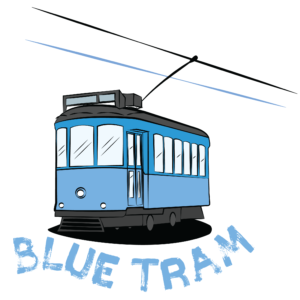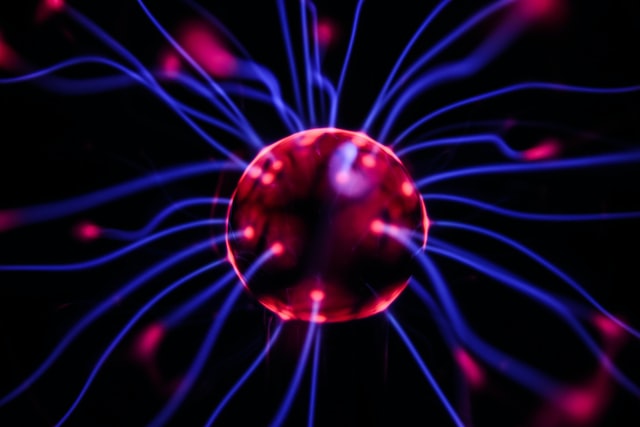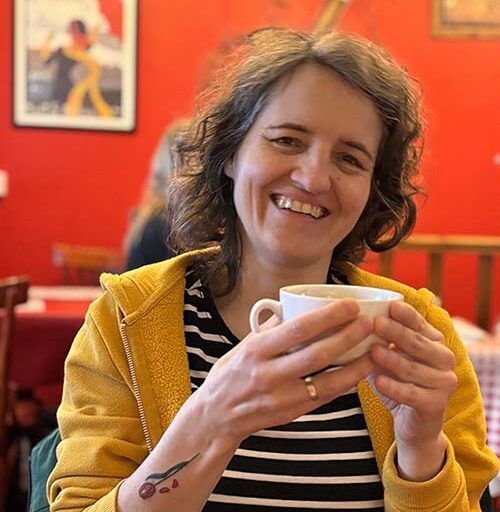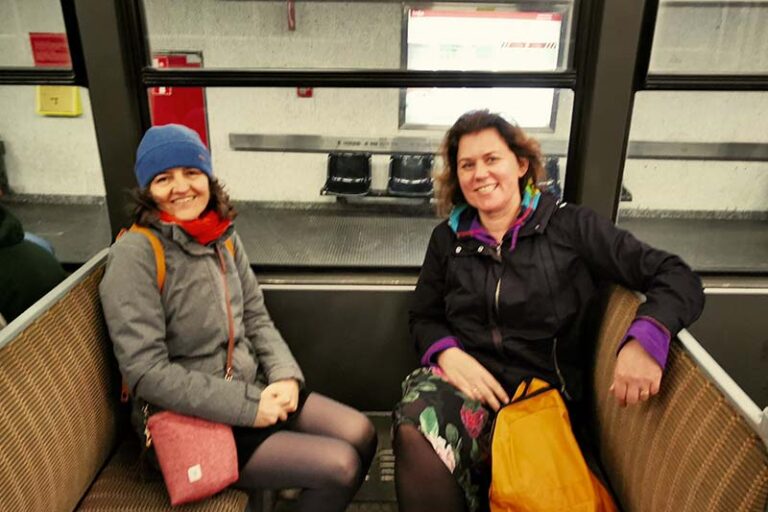This post is also available in:
 polski (Polish)
polski (Polish)
You are a light-bearer
Receiving radiance from others
Flickiering sun flame
Unpolished earth in the palm of hand
-so sings Björk in the song Solistice on her album Biophilia which is like science-influenced meditations. We all were waiting for a vaccine but also wanted to find a way to relax where the pandemic started. Science and art, bring light to our life. Dr Grazia Marsico told me about their beautiful relationship.
I met Grazia in Galway where she completed her Ph.D. in Biomedical Engineering at NUIG. Now she works as a Postdoctoral Researcher at the Georgia Institute of Technology, the US where she studies immunology. Friends know Grazia as a very artistic personality with a passion for life. In the laboratory, she creates lymph nodes models that serve as platforms to develop vaccines and drugs for cancer. She published several scientific articles and got a Marie Curie award in communicating science. Besides her remarkable scientific achievements, she dances and juggles fire with a group of performers, paints, but above all she loves music.

Grazia Marsico in fire performance.Why did you choose to be a scientist?
I grew up by the sea in Bari, in the south of Italy. I could see the sea every day even from my window. It inspired me always, and I wanted to study Marine Biology, but there was no school in the University of my city. So, my cousin Dr Antonio Moretti which is a scientist in ISPA of National Research Council, suggested that maybe Biotechnology would be a better idea. He was a kind of mentor for me at that time. I admired his life, as a scientist, his passion, and his numerous travels. It made me decide to study Biotechnology.
However, after three years, I was thinking to quit it for an artistic job. I loved art since childhood because I could see the artistic activities of my mam. It was a flicker of longing, but I found my balance. Now, I can enjoy art and science independently or sometimes connected.
What do you do exactly in the lab?
I work in an immune engineering lab. Our goal is to recreate in vitro a model of the lymph node, the organ where adaptive immunity takes place. In the lymph node antigens are presented to B cells that produce antibodies that confer to us permanent protection against an infectious agent. My work in the lab consists of developing organoids that mimic the mechanism of immune response and cancer chemoresistance. In particular, I create platforms were to develop vaccines and new drugs.
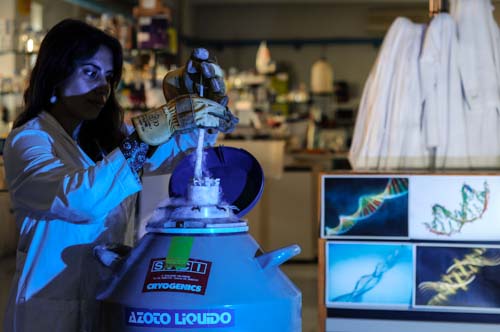
Dr Grazia Marsico in the lab. How do science and art meet?
Art and science are about observation and interpretation. I believe though that while science is an outside-in-outside process. To explain this better, science is based on observation of a natural phenomenon, investigates its essence through experiments. The acquired knowledge that comes from the outer world is internalized and processed to create a product or an invention that improves the quality of life, our health, or technology. Biomaterials, my field of expertise, is a perfect example of this workflow. Taking inspiration from natural components of the human body, biomaterials are designed to mimic natural properties and are used in regenerative medicine in a great variety of applications.
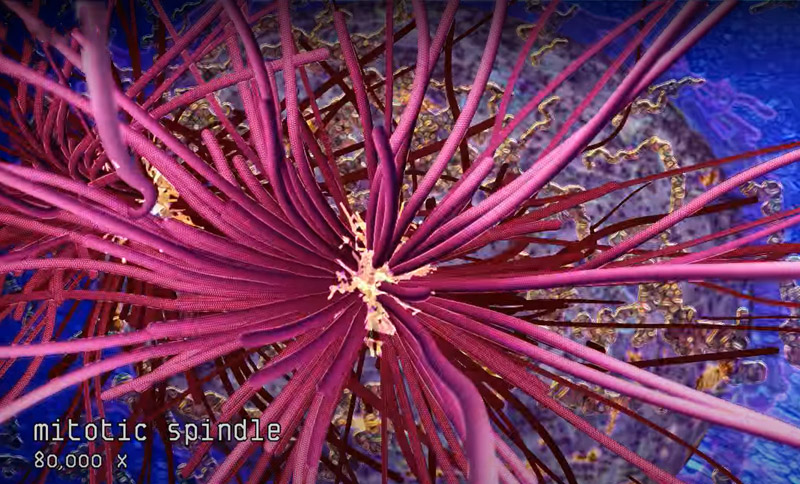
Screen-shot from Hollow - a song by Björk.During my Ph.D. thesis in CÚRAM SFI Research Centre for Medical Devices in Ireland, I used a hydrogel made of elastin-inspired proteins. Elastin is a protein of our body that confers elasticity to muscles, arteries, and cartilages. I made a gel of elastin that was able to induce the formation of the new blood vessels. This is the invention.
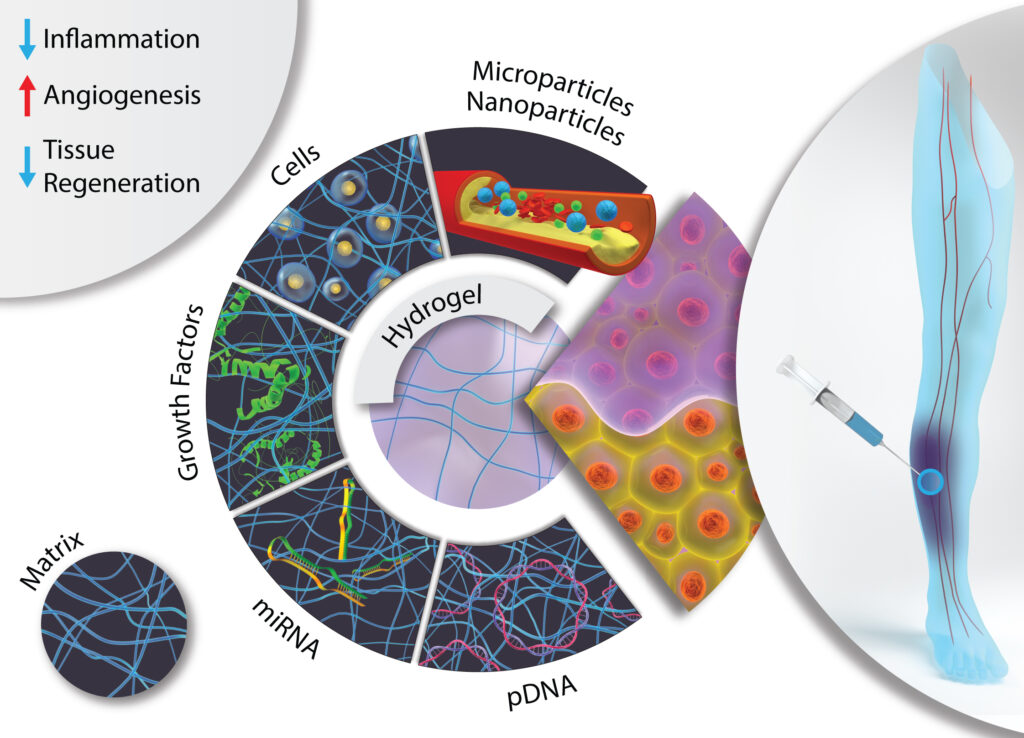
Figure by Maciek DoczykDifferently from science, art is an inside-out process. I believe that it is an inner force within that deep of our souls. It is light that cannot be contained, our sensations and feelings evade the inner dimension like a river that breaks its banks. A work of art is the outer shape of human souls that is there for others to enjoy. In art, we find consolation, extasis, familiarity, happiness.
Both art and science rely on creativity and intuition, but while science is rational and controlled, art is spontaneous and uncontrollable. They are like two twin sisters with different characters.
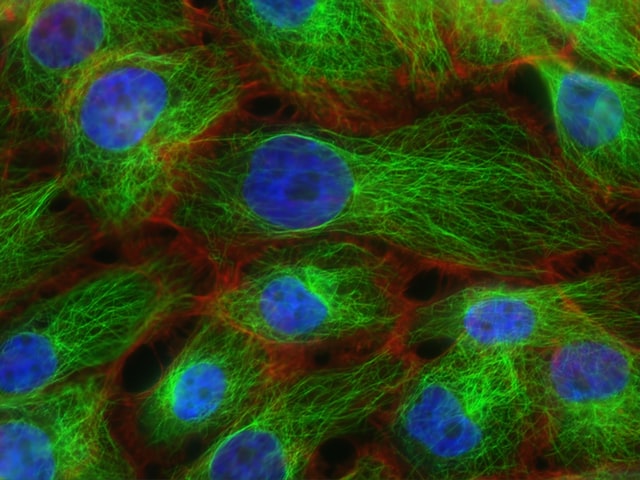
Picture under the microscope by Christina Stuelten Science takes care of the progress of our practical life, art feeds our emotional side, and we all know that body and soul entwined together in one single entity. For sure science and art improve our health and society. Science more physical, modify it to the things we can touch or see like medicine drugs.
Art also can be a cure but for emotional pain, and rich our soul. Both can make people happy, and transform ideas about the world into a form that allows the viewer to connect with them. I think that artists and scientists do the creative processes for love. They usually passionate about what they are doing. I can say that science is a kind of art.
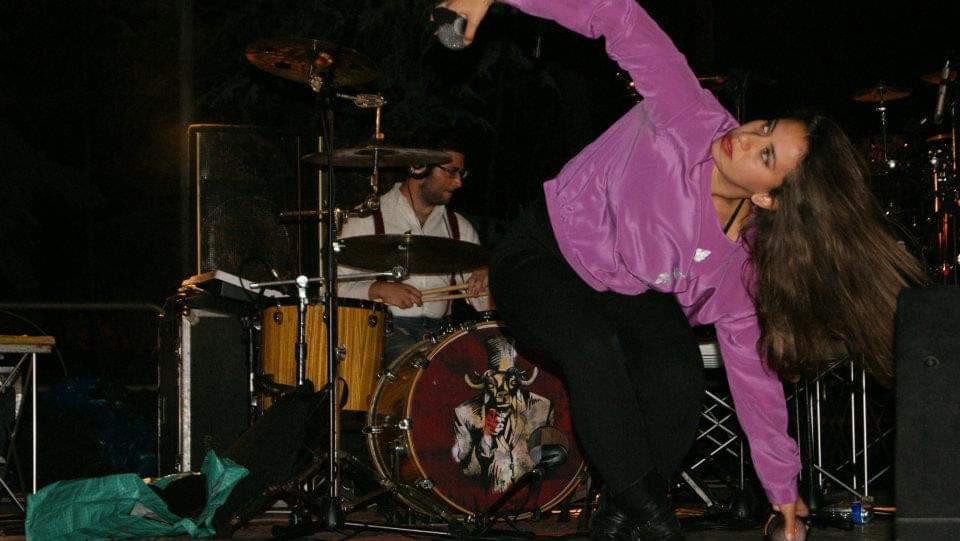
Can you use art to explain science?
One of the most difficult missions of scientists is to explain to the world what they are doing using a simple language that everyone can understand. Art can be a great helper to do it. During my Ph.D. in CÚRAM, my labmates and I performed several public engagement activities.
Heart-shape cookies for explaining biomaterial therapies.
One time we made a workshop for children at Primary school to explain to them what is a heart attack. So, we prepared tasty and colorful cookies. Cookie as a heart, colourful sugar – proteins, marshmallows – cells, colour gels – natural or artificial biomaterial implants.
Theatre
Also, as Ph.D. students, we participated in the comedian stand-up competition at the Róisín Dubh – a famous pub in Galway. We told a story about “The Kingdom of Heart” to explain what deas means to a healthy heart. The viewers could get a piece of knowledge in a funny way. The story was about the situation when we start to eat junk food and thought it our heart atelier get a block, then is no access for oxygen. Finally, the scientist has found a cure that can fix it.
Exhibition
We have collaborated with the artists Siobhan McGibbon and Joanna Hopkins In the Chimera Art & Science project. Artists have been given full access to the laboratories of CÚRAM and its staff. I was their mentor. They observed our work, and metamorphose it into art. An exhibition of their art inspired by science was shown at the Galway City Museum (2015).
Art like the clip of the song Hollow by Björk can take us to the world under the microscope. And in one moment we can fly between blood tissue, prophase cell, mitotic spindle, cytoplasm, nuclear membrane. – Thread me upon this chain. I’m part of it… – sings Björk.
Written by Malgosia Kozlowska-Doczyk.
Cover pictures by Josh Riemer.
